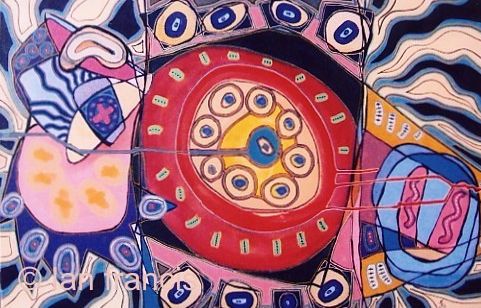
Symptoms
Although panic attacks (often also called anxiety attacks) can produce some very disturbing symptoms, they are completely harmless.
Furthermore, panic attacks are also a severe attack of anxiety and fear that occurs suddenly, often without warning, and for no apparent reason.
In addition to the anxiety, various other symptoms may also occur during a panic attack.
These include one or more of the following:
- Palpitations or a thumping heart.
- Sweating and trembling.
- Hot flushes or chills.
- Feeling short of breath, sometimes with choking sensations.
- Chest pains.
- Feeling sick.
- Feeling dizzy, or faint.
- Fear of dying or going crazy.
- Numbness or pins and needles.
- Feelings of unreality, or being detached from yourself.
The physical symptoms that occur with panic attacks do not mean there is a physical problem with the heart, chest, etc. The symptoms mainly occur because of an ‘overdrive’ of nervous impulses from the brain to various parts of the body during a panic attack.
During a panic attack you tend to over-breathe, (hyperventilate). If you over-breathe, you exhale too much carbon dioxide which changes the acidity in the blood. This can then cause more symptoms such as confusion and cramps, and make palpitations, dizziness, and pins and needles worse.
This can make the attack seem even more frightening, and make you over-breathe even more, and so on. A panic attack usually lasts 5-10 minutes, but sometimes they come in ‘waves’ for up to two hours. Panic attacks are commonly linked to agoraphobia and the fear of not being able to escape a bad situation.
Many who experience panic attacks feel trapped and unable to free themselves.
Sufferers of panic attacks often report a fear or sense of dying, “going crazy”, or experiencing a heart attack or “flashing vision”, feeling faint or nauseated, heavy breathing, or losing control of themselves.
These feelings may provoke a strong urge to escape or fee the place where the attack began (a consequence of the sympathetic “flight or fight” response).
Try not to fight a panic attack. Fighting a panic attack can often make the experience worse. Trying to fight it and then finding that you are unable to can increase your sense of anxiety and panic.
Instead, during a panic attack, reassure yourself by accepting that, although it may seem embarrassing and your symptoms may be difficult to deal with, your attack is not life-threatening.
Focus on the fact that your attack will have an end, and try your best to let it pass.
Treatment
There are two main forms of treatment for panic disorder – psychological therapy and medication. Depending on your individual circumstances, you may require either one of these types of treatment or a combination of the two.
The cause of most panic attacks is not clear, so treatment may be different for each person. Typically, it involves psychotherapy, cognitive-behavioural therapy, and/or medication.Alternative treatments like meditation and relaxation therapy are often used to help relax the body and relieve anxiety.
For preventive or maintenance care, psychotherapy offers support and helps minimize fear.
Psychotherapists use therapy to find emotional conflicts and past difficulties that may lead to anxiety, which in turn is released through panic attacks. Without realizing it, you maybe experiencing these bodily sensations and physical reactions as a way of avoiding painful emotions.
Psychotherapy can help you to understand your present reactions in the light of past difficulties, and to overcome them. Nevertheless, in some cases, psychotherapy alone can clear up the disorder.
Cognitive-behavioural therapy helps people learn to deal with panic symptoms, using techniques like muscle and breathing relaxation. In addition, cognitive behavioural therapy aims to identify and change the negative thought patterns and misinterpretations that are feeding your panic attacks.
Dr Vasos can help with panic attacks and attendant issues.
